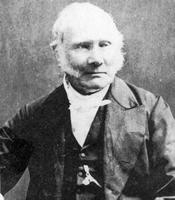Stirling, Robert (About the EoE)
Stirling, Robert
Robert Stirling (1790-1878), Scottish inventor of the first practical hot-air engine in 1816. Stirling's design had a vertical cylinder about 60 cm (2 ft) in diameter, produced about 1.5 kilowatts (2 horsepower) of power when pumping water from a quarry; the engine ran for two years before the hot sections of the cylinder burned out. The Stirling-cycle engine differs from the internal combustion engine in that the working fluid remains in the working chambers. The heat is applied from an external source, providing flexibility in the choice of fuel. Stirling engines also have a high thermal efficiency. They were commonly used prior to World War I, but as steam engines improved and the competing compact Otto cycle engine was invented, Stirling engines lost favor. There was a resurgence in improved Stirling engines in the late 20th century for distributed power generation, gas liquefaction, and automotive power.
